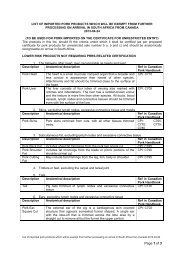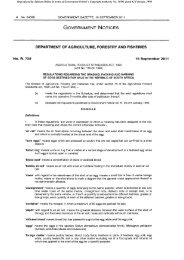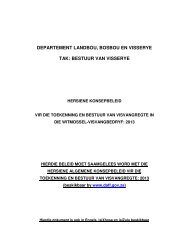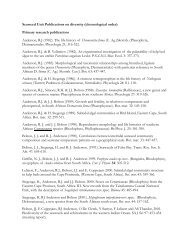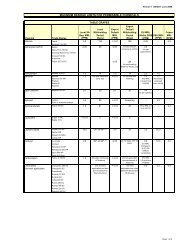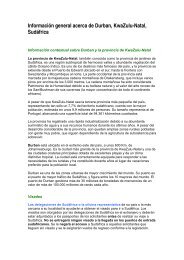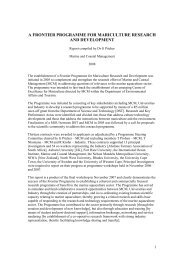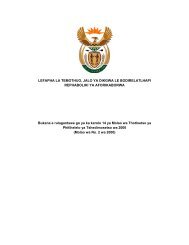Create successful ePaper yourself
Turn your PDF publications into a flip-book with our unique Google optimized e-Paper software.
A<br />
nemones are very simple, solitary animals<br />
that look rather like flowers. Their bodies<br />
resemble a thin sac, filled with water, with a<br />
single opening, the mouth, that is surrounded by<br />
tentacles. Anemones lack any hard skeleton and<br />
are supported by the water inside their body<br />
cavity. When an anemone contracts its circular<br />
body-muscles it becomes long and thin; when it<br />
contracts its longitudinal muscles, it becomes<br />
short and squat. The body wall consists of two<br />
layers of cells with no well-developed organs. If<br />
water is lost from the body cavity, the muscles<br />
no longer have the necessary water pressure to<br />
act against, and the anemone is helpless. It has<br />
to use flickering hairs (cilia) to create a current<br />
to pump the body full of water once again. This<br />
is a very slow process. So don’t stick your finger<br />
into the mouth of an anemone and hold it open<br />
until the anemone goes soft.<br />
Anemones belong to the phylum Cnidaria, which<br />
also includes jellyfish, corals and hydroids (e.g.<br />
bluebottles). All have a simple sac-like structure<br />
with two cell layers, radial symmetry, a single<br />
opening and specialised stinging cells.<br />
Stinging cells – nematocysts as seen through a microscope<br />
discharged<br />
Planular lava<br />
C O A S TA L A N D M A R I N E L I F E – A N I M A L S : I N V E RT E B R A T E S – C N I D A R I A N S<br />
Anemones 3B<br />
Feeding – stinging animal traps<br />
An anemone may look like a delicate flower attached by a flat<br />
adhesive disc – but it is, in fact, an animal that can move and<br />
catch prey. The mouth is surrounded by tentacles and closed<br />
by a pharynx that serves as a valve, allowing food to enter<br />
without the loss of water. The tentacles are packed with<br />
microscopic stinging cells, called nematocysts. When<br />
anemones touch and taste food, the stinging cells paralyse<br />
and entangle their prey. The anemone needs time to grow<br />
replacement stings. Anemones feed on mussels, small fish<br />
and any prey that the tentacles can grasp and push into their<br />
mouths. The body cavity serves as the gut. It is divided vertically<br />
by sheets that extend inwards from the body wall and incre a s e<br />
the surface area for digestion and make it easier to control<br />
the water pressure for movement. Waste matter is expelled<br />
through the mouth, as there is no anus.<br />
Reproduction and life cycle<br />
Most anemones have separate males and females. They<br />
release eggs and sperm, and fertilisation occurs externally in<br />
the sea. The eggs develop into tiny, oval planular larvae that<br />
swim around and feed for about two weeks before settling in<br />
rocky crevices and growing into individual anemones (polyps).<br />
Anemones can also bud off new individuals or split in half to<br />
form two animals.<br />
False plum anemone<br />
mouth<br />
tentacle<br />
spherule with<br />
potent stings





